How to Work Safely on Top of Vehicles
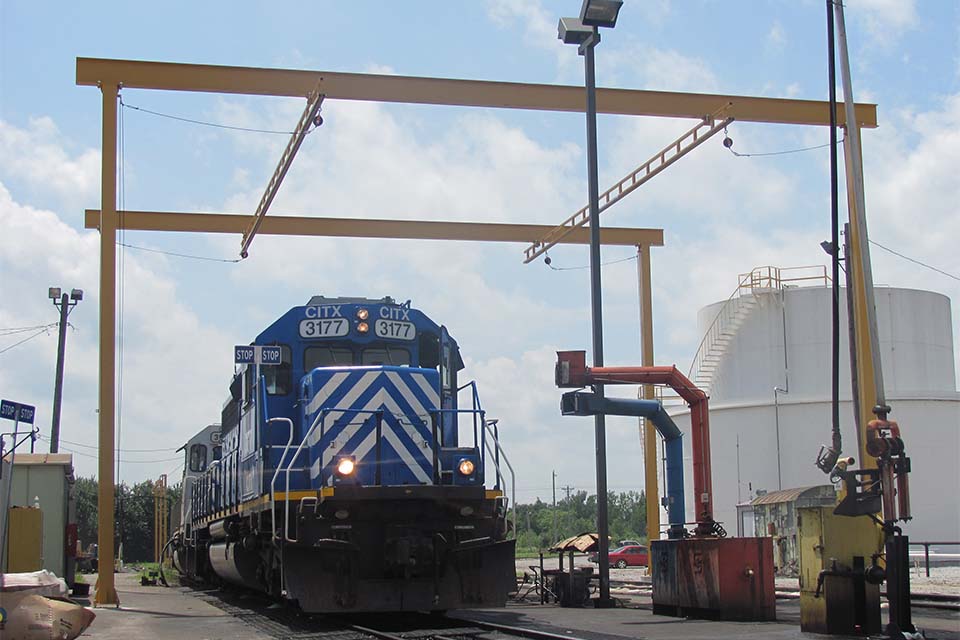
Trains, Planes, and Automobiles… what do they all have in common? Someone has to work on top of them for a living.
This means that someone is working at height, is exposed to risk, and needs to be protected.
OSHA requires fall protection for any employee on a walking-working surface with an unprotected side or edge that is 4 feet (1.2 m) or more above a lower level. (See OSHA 1910.28(b)(1))
But what type of fall protection should you use? How do you decide which is best for you and anyone accessing the tops of these vehicles?
What Types of Fall Protection Does OSHA Allow for Working on Vehicles?
OSHA is very clear on what types of fall protection are allowed when you are working at heights over 4 feet. In OSHA 1910.28(b)(1)(i), the acceptable forms of fall protection are:
There is a place in safety for all 3 of these options. In this article, we will focus on guardrail and personal fall protection systems
Using Overhead Lifelines to Work on Vehicles Safely
Overhead lifelines are a form of personal fall protection system and one of the most common solutions used when working inside warehouses.
However, there is a lot that goes into using horizontal lifelines in order to be considered safe and compliant. We have a horizontal lifeline guide to help you work through the details.
A key detail is that, in order to satisfy the requirements of OSHA, this type of system must be “designed, installed, and used under the supervision of a qualified person.”
If you have met the requirements in the guide and have a qualified person involved, then here are the most common ways to use an overhead lifeline system.
Ceiling Mounted Overhead Track
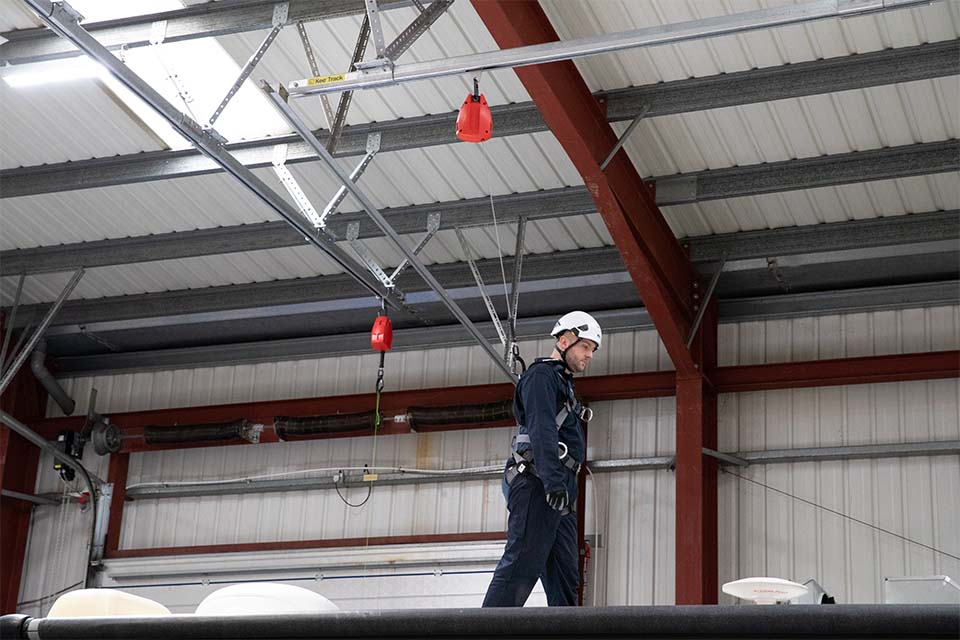
Mounting a rigid track or cable system to the ceiling structure is often the first thought when it comes to protecting workers on top of vehicles.
One of the main advantages of this approach is that it frees up space on the floor below. As far as materials go, this approach can be relatively simple and inexpensive.
Most of the cost and complications with this option comes with the engineering requirements. Remember the need for a qualified person.
Because of this, it’s not satisfactory to install some I-bolts and cable from the hardware store and call it a day - and for good reason. The forces imposed on the structure during a fall like this are very substantial, so a thorough review of the structure is necessary. This may mean digging up structural drawings, or in some cases paying for an engineering site visit – with no guarantee that the results will show adequate structural support for mounting a lifeline.
Free-Standing Overhead Fall Protection
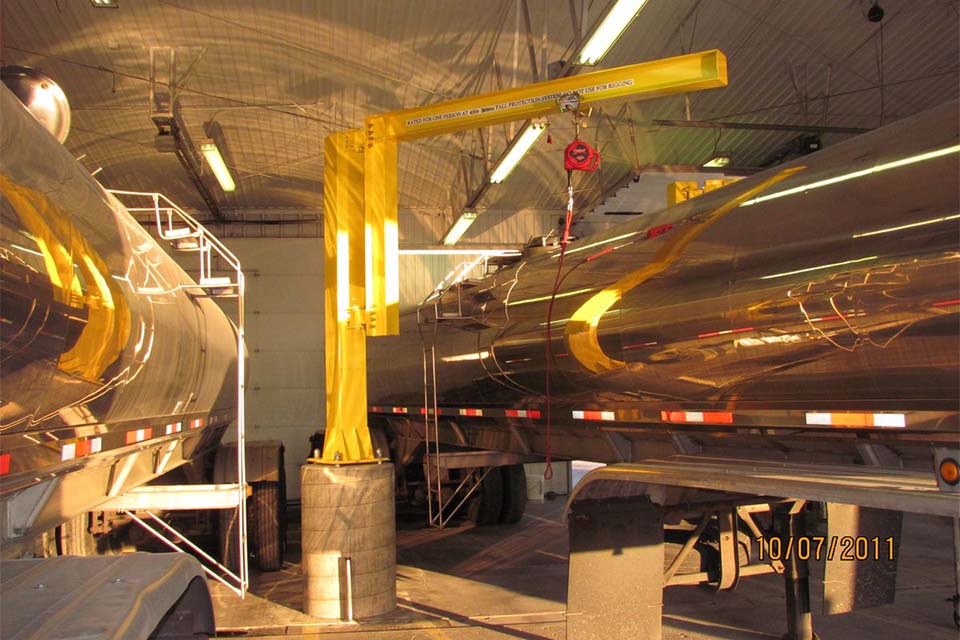
Like ceiling-mounted options, free-standing overhead lifelines require similar user training and PPE upkeep.
The biggest difference between these options and their ceiling-hugging cousins is that they are, for the most part, self-contained systems.
Mounted options will typically have a base flange that permanently attaches to the ground. Because of their requirement for attachment, these systems also require engineering oversight. This does tend to be less complex than the overhead options. Often, they will come with specifications for attachment to the substrate, where the manufacturer will call out the minimum concrete thickness and psi.
One clear advantage of ground-mounted overhead rigid lifelines is that they can be placed wherever you need them, and you don’t have to rely on the location of pre-existing structural steel.
A disadvantage of this approach, when used indoors, is that they can take up a decent amount of space without the ability to move them around. Because these systems are larger and have more material involved, they tend to be a considerable amount more costly than ceiling-mounted options.
Mobile Overhead PFAS
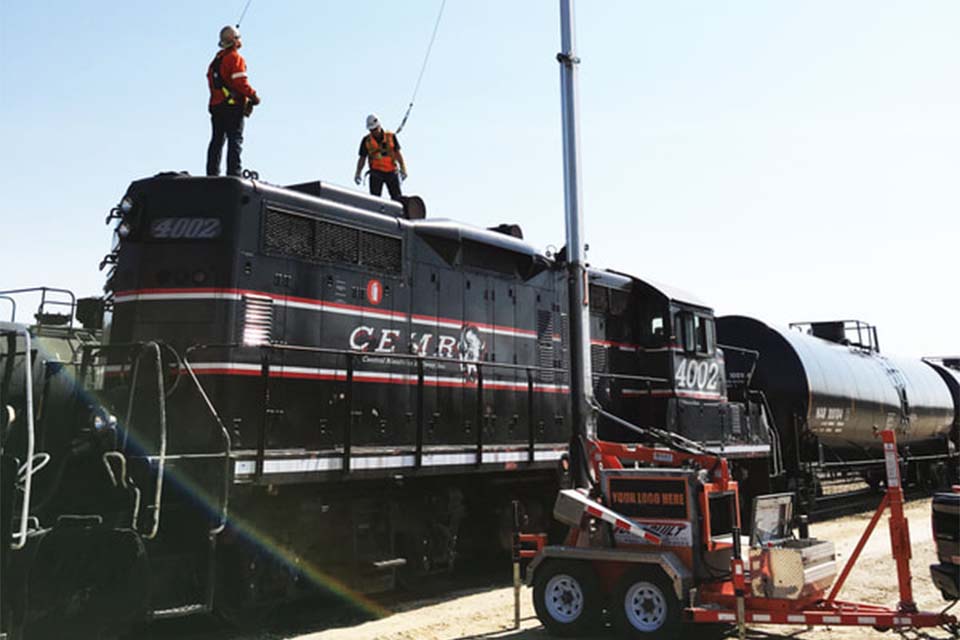
Freestanding options have similar layouts to the mounted options but rely on counterweight or large frames as opposed to anchored attachments. These systems tend to have a larger footprint but offer the advantage of being able to move from spot to spot and cover more positions.
Unlike the mounted options, these are completely pre-engineered. This means that your qualified person has the design and engineering work with one up-front purchase. It ships to your door, you set it up and can start using it right away.
This option can provide a lot of flexibility with very little hassle on the front end. Cost-wise, these options tend to be on the higher end.
Safe Access Platforms for Vehicle Fall Protection
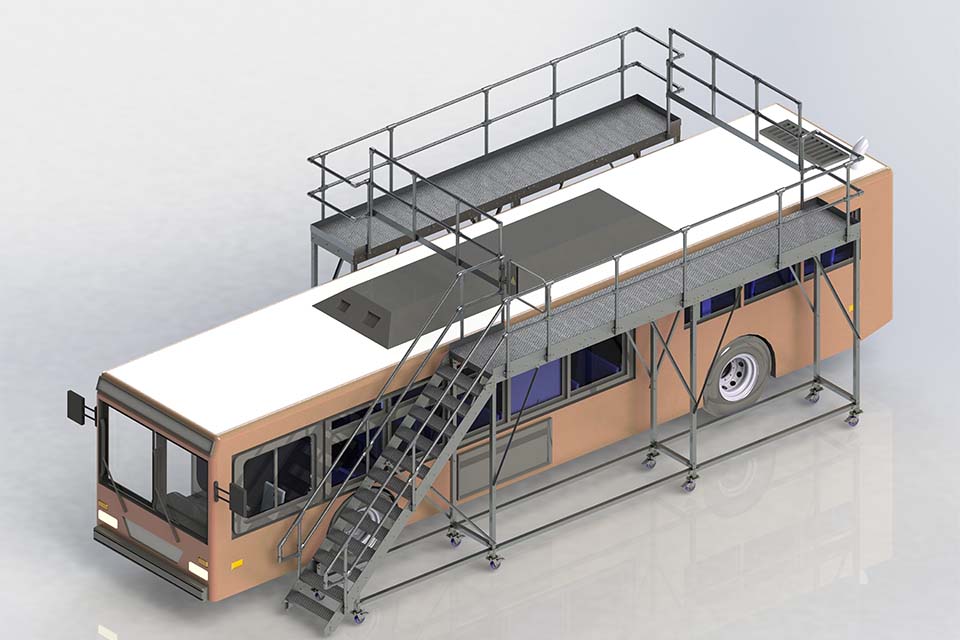
When it comes to both safety and ease of use, safe access platforms are a clear winner.
Access platforms will include OSHA-compliant guardrails to protect any workers from falls. It also provides a means of accessing the top of the vehicle and additional space to work from.
When made of the right materials, access platforms can be used indoors or outdoors. With fewer moving parts compared to lifeline systems, these can be expected to require less maintenance.
Using a modular, pre-engineered design offers a great deal of flexibility, without the need for complicated engineering. The platform option also removes the hassle of specialized training, five-year recertifications, and all the PPE that lifelines require.
There are two disadvantages to consider. This option has a higher up-front material cost. This is made up in its efficiency gain while doing the work. Another concern is the amount of available space required for an option like this. Designing the platform right will be important for your location.
The clearest advantage of this option is that it creates a safe working area using passive controls. There is little active participation required from the user. Also, the guardrails prevent the fall from happening in the first place.
Summary
Working on top of vehicles, like buses or RVs, can be very dangerous. The good news is that you have some options available. The better news is that you’re not alone.
Our team of experts will help you determine which of these options is best for you and your team. Contact a specialist today and we will help you get to the finish line of providing a safer workplace for your employees.



